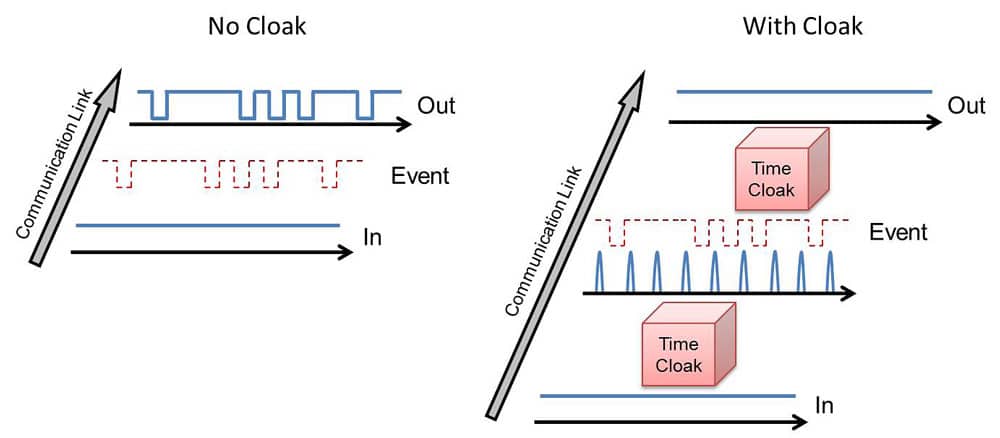
A new temporal cloak developed for optical communications by Purdue University researchers could thwart potential eavesdroppers and improve security for telecommunications.
University scientists have developed a commercially-viable temporal cloak for optical communications that acts as an independent pocket in time, allowing data to pass through without leaving any evidence. Researchers believe the new development could drastically improve security for data transmission in optical communications by preventing eavesdroppers from even recognizing that a transmission was sent.
The new research is built on theories proposed in 2010 by optical physicist Martin McCall of Imperial College London and his colleagues, who suggests that it may be possible to create temporal cloaks that “cut out” small windows in time to camouflage operations. Researchers at Cornell University first demonstrated McCall’s theories in 2012, but were only successful in cloaking a gap of 15 picoseconds long—a length of time only about one 10,000th of a percent of the time needed to adequately cloak data transmission in optical communications.
Now, researchers from Purdue University have successfully increased that percentage by as much as 46 percent, making the concept potentially viable for commercial applications. The Purdue team also employed off-the-shelf equipment used in commercial optical communications, in contrast to the complex, expensive “femtosecond” lasers required to complete previous temporal cloaking research. Their findings are published in an advance online publication of the journal Nature.
According to graduate student Joseph Lukens, the technique works by manipulating the phase, or timing, of light waves, which determines the level of interference between these waves.
By controlling the phase and allowing the waves to interfere with each other, “you are able to make them add up to a one or a zero,” Lukens said. “The zero is a hole where there is nothing.” Any transmission data in areas where the signal is zero would be cloaked.
With the use of a phase modulators—commonly used in optical communications to modify signals—to create the “holes” and a second pair to “cover them up,” it can be made to seem as if nothing was done to the signal.
“It’s a potentially higher level of security because it doesn’t even look like you are communicating,” Lukens said. “Eavesdroppers won’t realize the signal is cloaked because it looks like no signal is being sent.”
Such a technology could be used to hide critical or sensitive transmissions in the military, law enforcement and financial sectors, as well as to prevent contact, Lukens added.
“It might be used to prevent communication between people, to corrupt their communication links without them knowing,” he said. “And you can turn it on and off, so if they suspected something strange was going on, you could return it to normal communication.”






